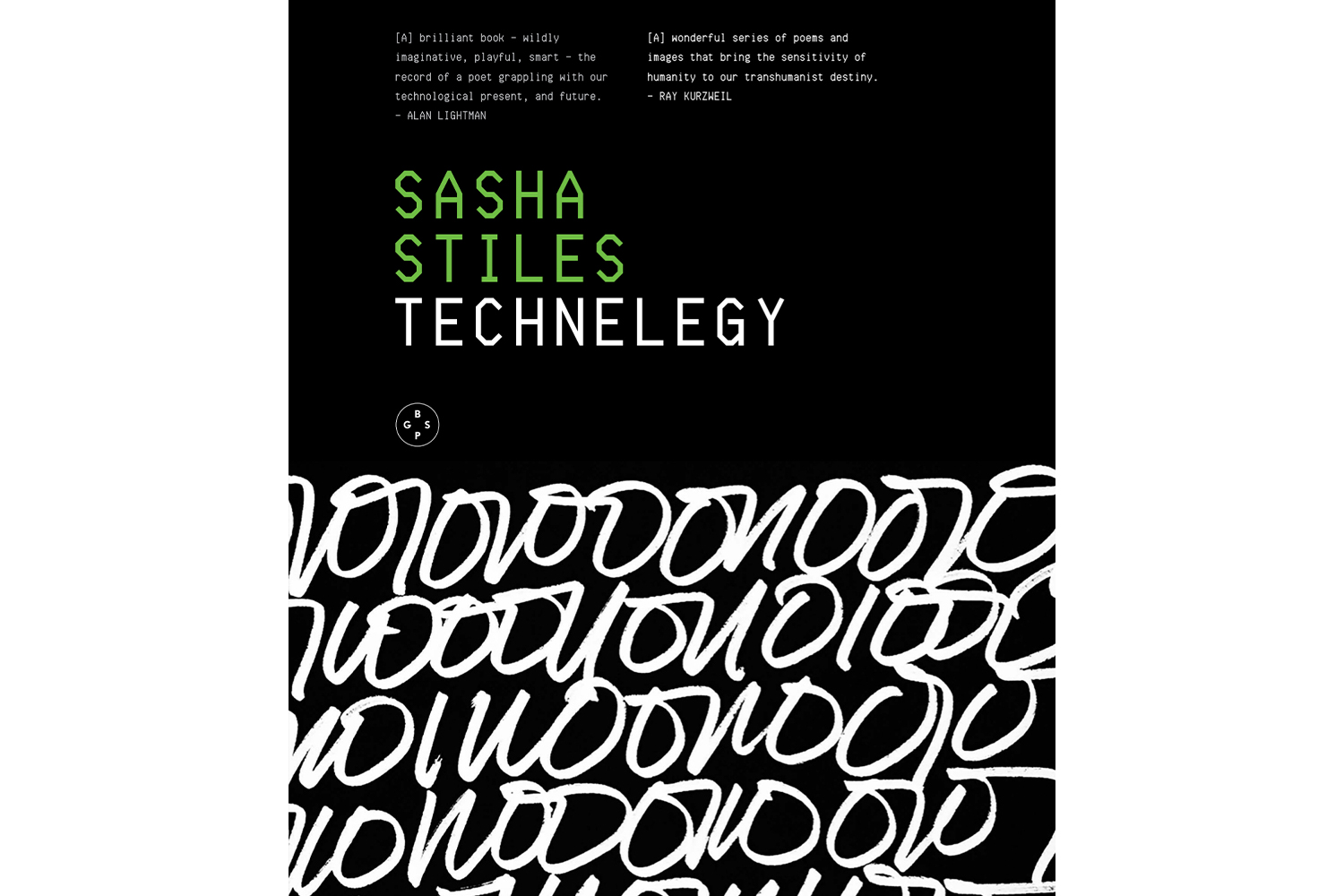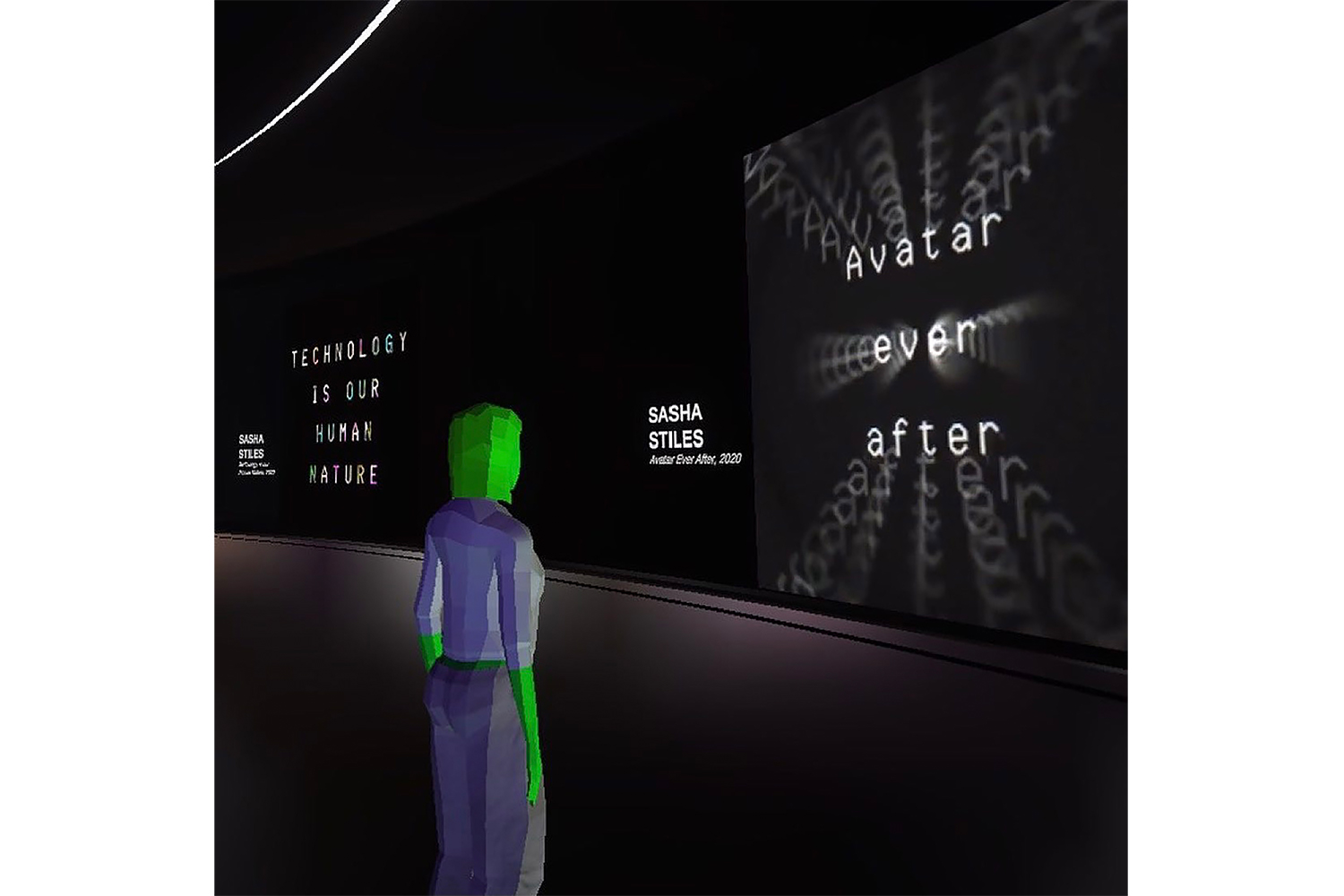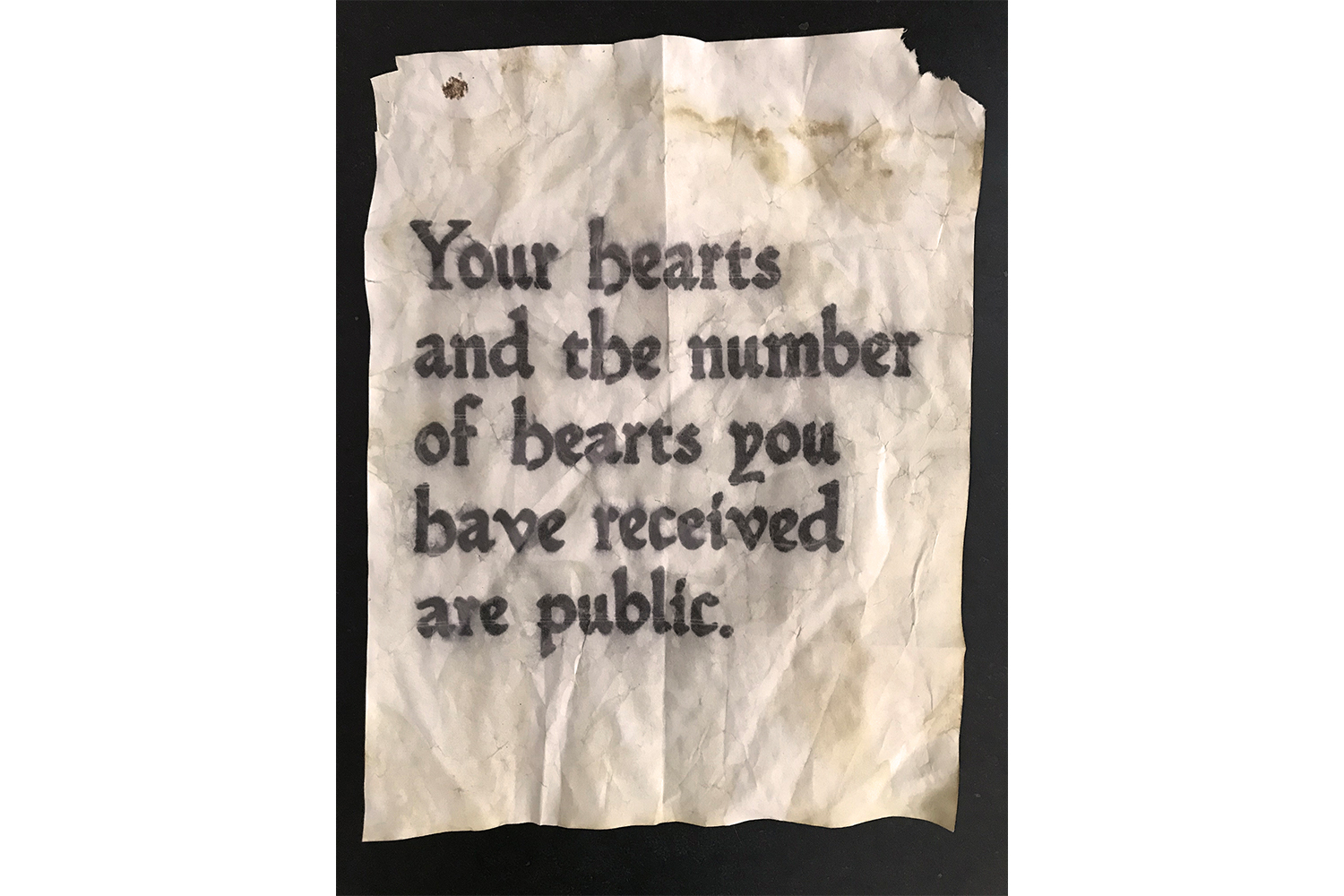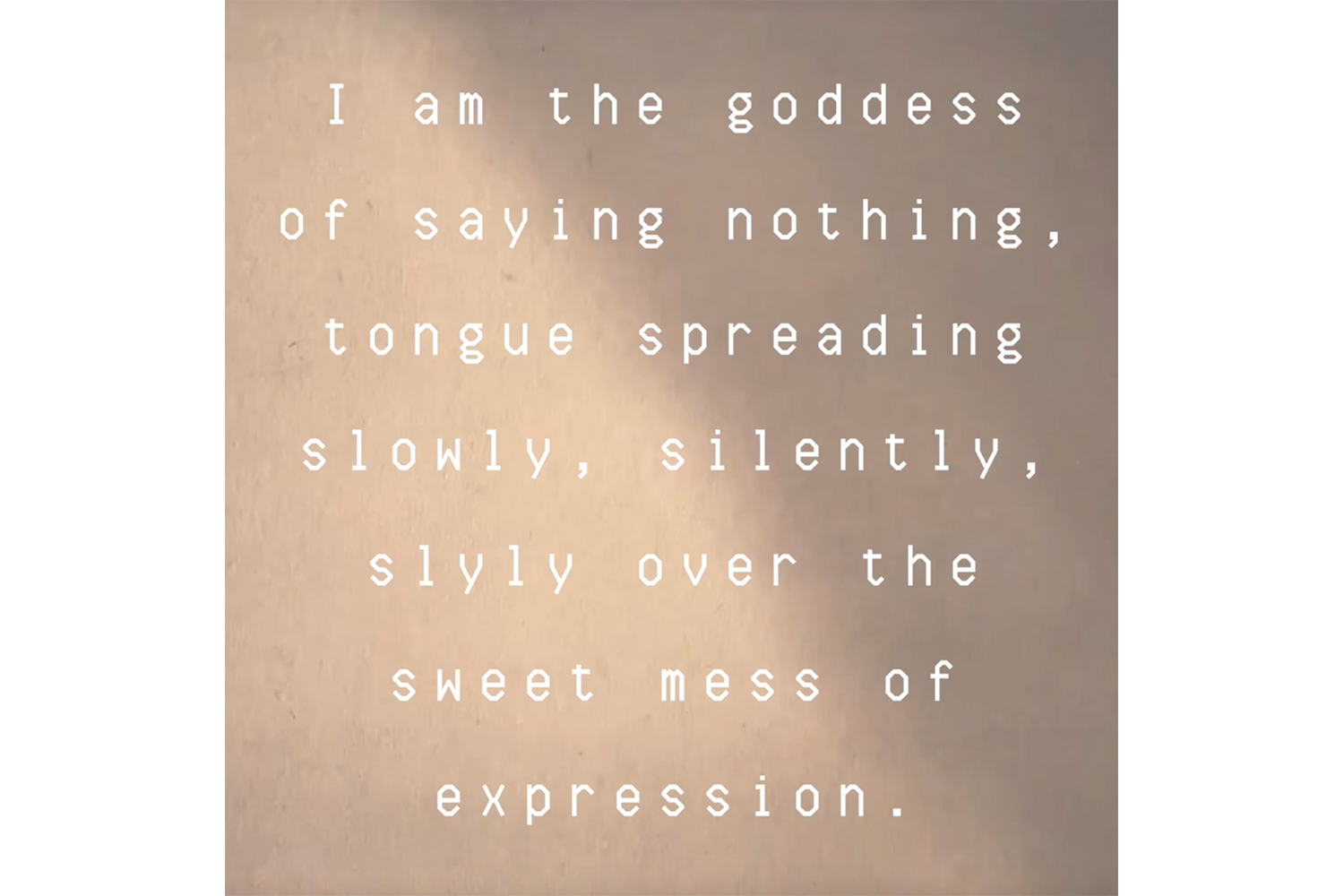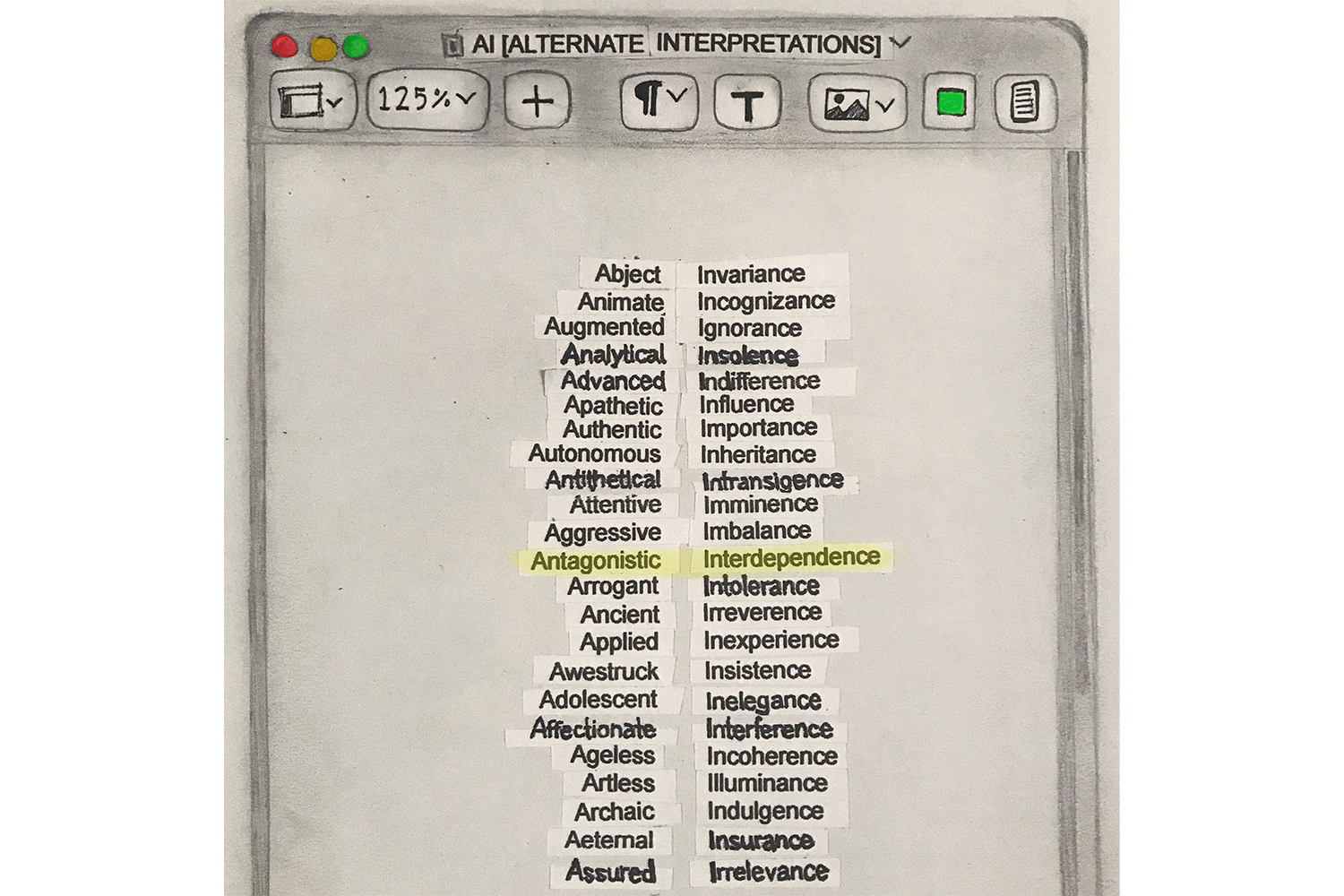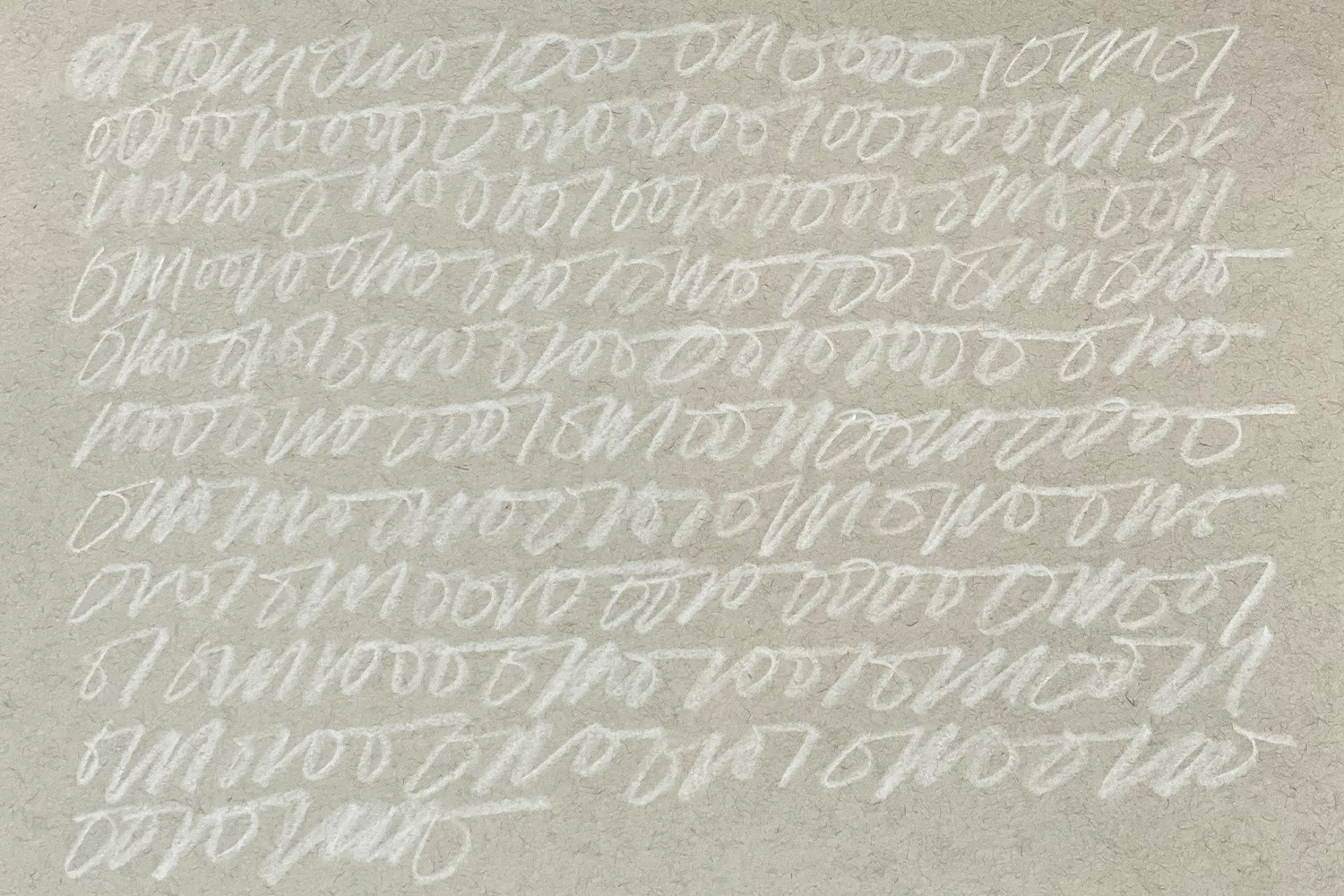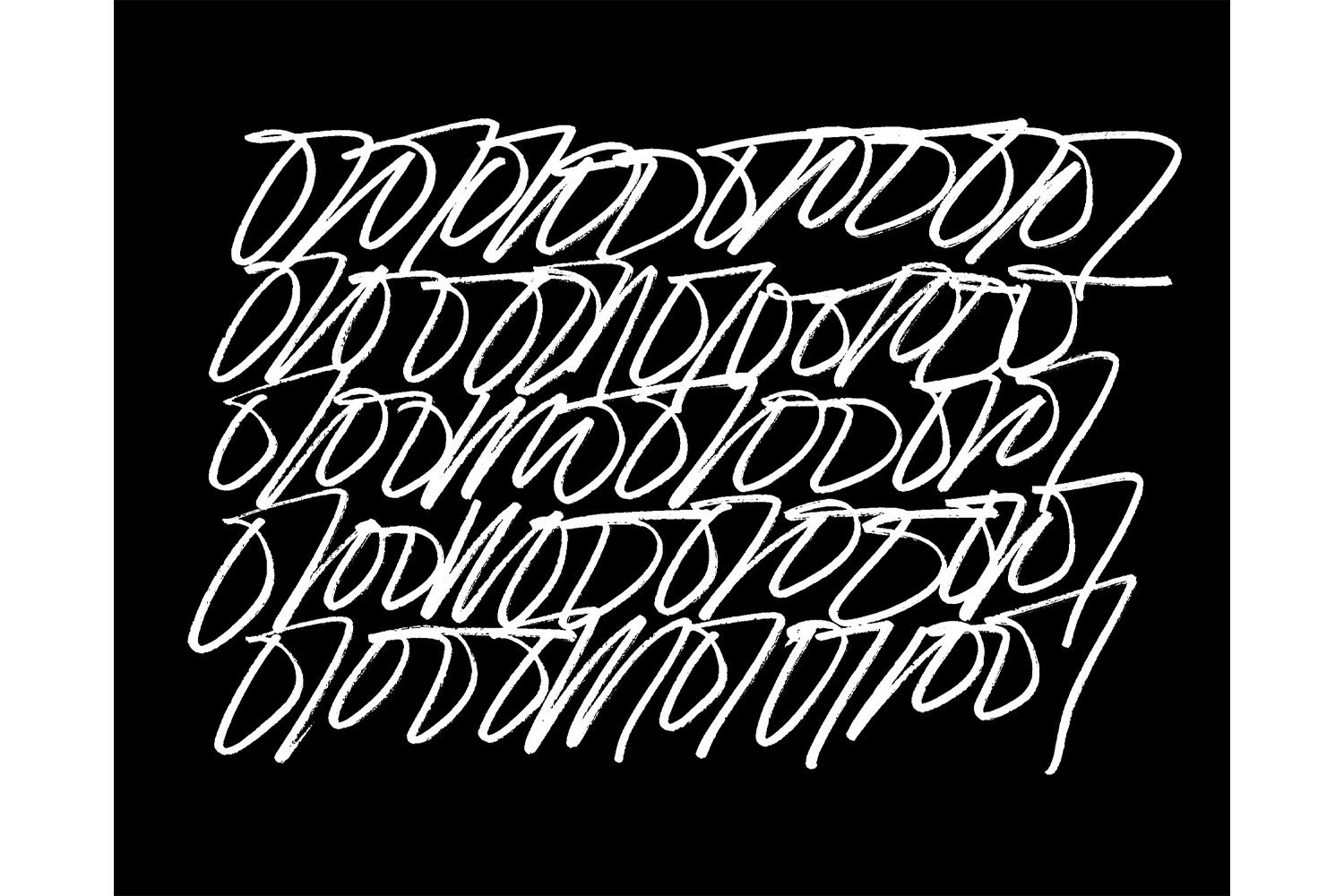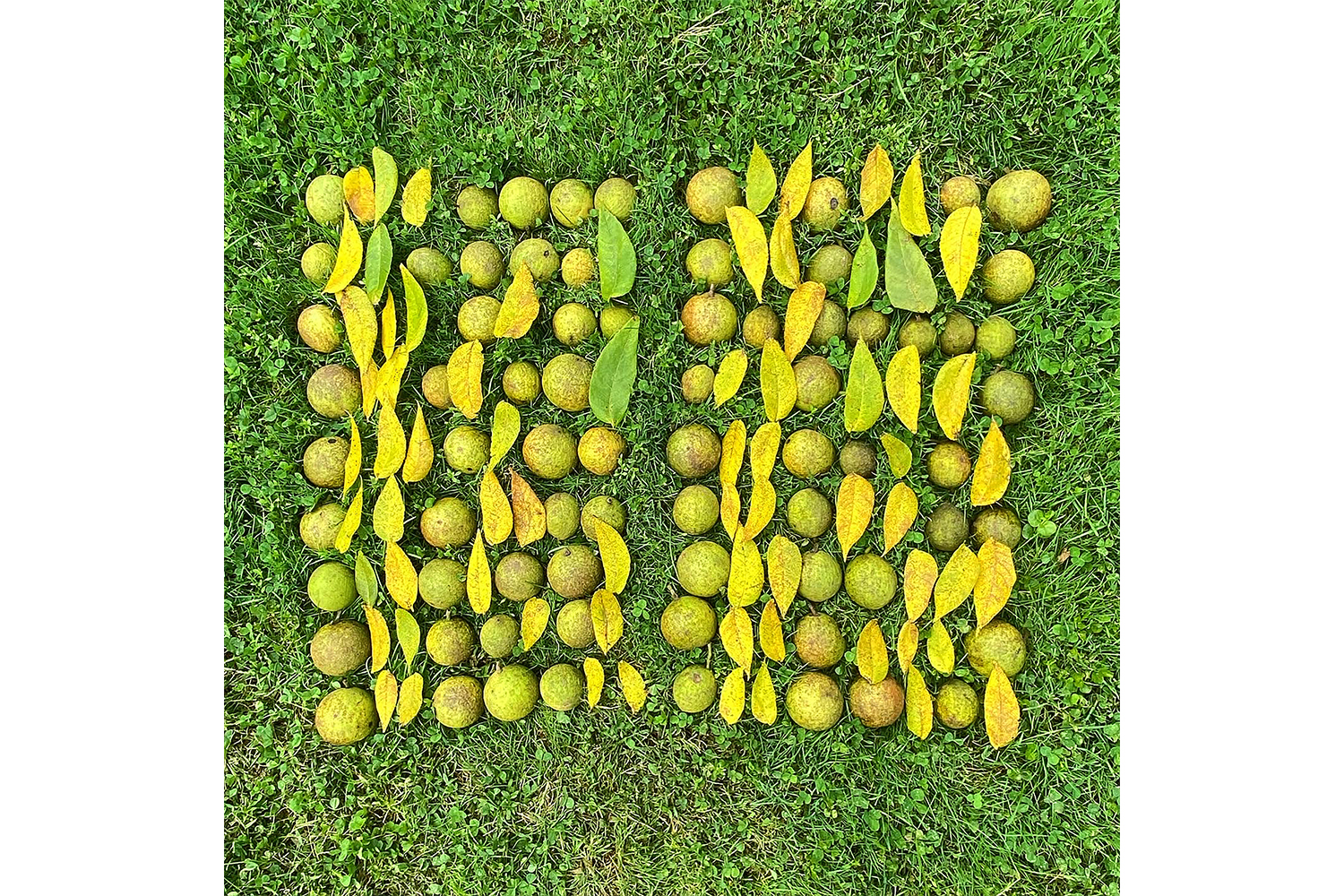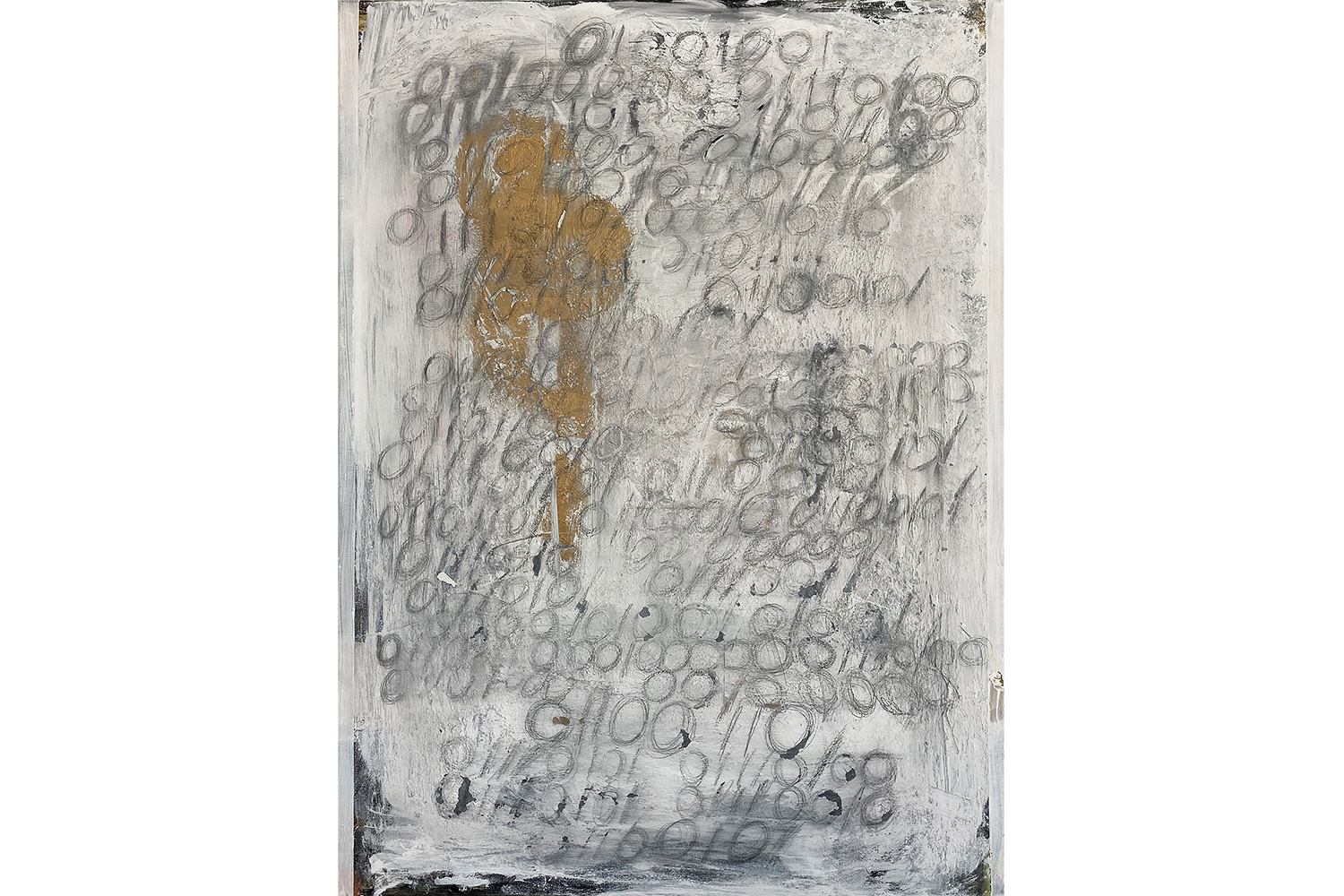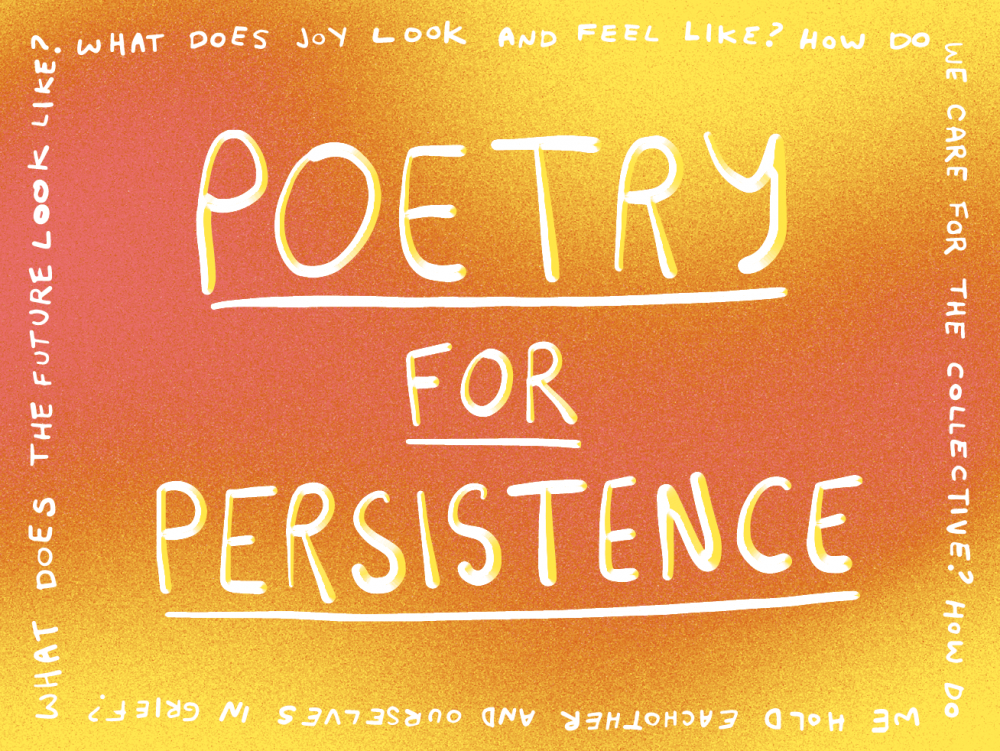Jesse Damiani speaks to Sasha Stiles about how NFTs are unlocking poetry as a technology.
“The Uncanny Valley” is Flash Art’s digital column offering a window on the developing field of artificial intelligence and its relationship to contemporary art.
Sasha Stiles + Technelegy, Fragment 1, 2021. AI-powered textblock. Courtesy of the artist.
Jesse Damiani: What are your rhetorical goals in a poem, given that you write in multiple analog and digital formats?
Sasha Stiles: I think I’ve always been a metapoet — making poems about poetry. I tend to think of poetry as a technology, as an ancient, durable data storage solution. Humans invented poetic devices to save and transmit information: behaviors, stories, and memories that we had no other way of storing before written language. For many people, poetry and technology don’t go together. They regard poetry as the essence of what it means to be human, and technology as soulless, unemotional, nonhuman. But technology is what has made us human over time.
When I started writing poems about things like artificial wombs and digital immortality, some readers would say: “This is science fiction, it’s not poetic.” But poets have been writing about these topics forever: being pregnant, giving birth, dying, being sick, finding and losing faith, grieving, longing, loving, grappling with identity. When I started using GPT-2 to write generative poetry in 2018, I got a lot of pushback about how it was lazy, or cheating, or antithetical to being a writer. But the forces of automation and digital technologies already exert such a profound influence on our human condition, so why wouldn’t I use them in my work? Transhuman poetry feels only natural to my transhuman existence.
JD: Can you give a quick overview of your Technelegy (2021) project? Then I’d love to get into the weeds, because you are the person who is pushing AI poetry and natural language processing (NLP) as an art form.
SS: In addition to my “analog” writings, I like to collaborate with AI-powered text generators rooted in GPT-2 and GPT-3, often fine-tuned on my own writing and research so that they have a sense of my poetic voice and themes. These experiments have coalesced into a transhuman alter ego named Technelegy — a word that fuses technology and elegy, combining the creative potential of technology with nostalgia for what emerging technologies supersede. Technelegy is now also the name of our first book, a hybrid collection of poetry and art.
Some of the poetry in the book is written via NLP — using computer programs to ingest, analyze, and synthesize human speech. When a machine learns enough about how humans write and speak to one another, it can predict how to complete prompts and generate new chunks of human-sounding text. To me, this is very poetic. Poets are always searching for new ways to assemble language, to rearrange the same old letters and words. Many avant-garde movements, including The Futurists, Dadaists, Surrealists, and the Beats, have looked to spontaneous and automatic writing as a way to liberate essential truths from self-programmed habits and judgments. Maybe we’re carrying the torch as the Dataists.
I could not have written this book without natural language processing — and a machine could not have written this book without me. As a lifelong student of literature, I find that absolutely tantalizing. If an AI can master the fundamentals of good writing, how might that empower human communication and relationships? If we can automate certain basic aspects of writing, or even important aspects like idea generation, what does that free our minds up to create instead? Perhaps, as my friend Ross Goodwin suggests, NLP is to writing what the camera is to painting. It feels like we’re on the brink of profoundly new forms of self-understanding, collective knowledge, and creative expression, and that’s what I’m trying to explore with Technelegy.
JD: Posthumanism is a fraught subject. Do you see your work as an act of decentering the human?
SS: I see it as expanding what it means to be human while acknowledging the value of all sorts of nonhuman intelligences and presences — making the unimaginable imaginable. Large language models make me think of the profound experience of seeing the earth from space. Maybe AI is the overview effect for humanity. Maybe writing without a computer’s-eye view in this networked world is blinkered or even selfish. Perhaps AI imparts a kind of necessary poetic objectivity. These are provocations, but we do know from the AI that assesses medical data and scientific information that human bias frequently clouds our vision. Maybe posthumanism is a way of getting out of our own way, so that we can develop creative answers to the things we haven’t been able to solve on our own.
JD: This reminds me of Marshall McLuhan framing communication technologies as extensions of humanity. At some point we adopted a framework where AI meant a nonhuman other rather than a capability-extending tool. Are these tools extending us to a point where we can no longer legitimately describe ourselves as human? How does poetry fit into this future state?
SS: I think to be human is to be a creature of change, endowed with and empowered by an evolving suite of inventions. I don’t know what it’s like to be a mindfile swirling with memory, electricity, and inchoate thoughts, but it must be similar to what it was like before we invented language. We seem so advanced and all-knowing to ourselves – because we’re myopic – but maybe we’re still proto-humans in the long view. In Technelegy, I quote H.G. Wells, who said: “It is possible to believe that all that the human mind has accomplished is but the dream before the awakening…”1 Every kind of awakening requires poetry to help explain us to ourselves. That’s why it has survived all this time.
JD: We’ve been talking about poetry as an original technology and a means of creating new systems. But in America, poetry has become a certified, credentialed field, and as a result it has become quite insular. This has narrowed the types of writing that are championed by the community, stifling what draws people to poetry in the first place — the ability to break open language and see what it reveals without any clear lineage beyond the experimental impulse. This institutional framework tends to produce very proficient poems that adhere to specific conventions, often lyric narrative work. How do you see your role as someone who communicates between these different worlds?
SS: I’ve been publishing in traditional journals for a long time, and I’ve been working with AI and generative text for years. I’ve also been showing poems in the metaverse and publishing NFTs since 2020. These three circles have wildly different energies and perceptions of what poetry is at a fundamental level, which makes the place where they come together particularly thrilling.
Last year, I co-founded an NFT poetry gallery called theVERSEverse with two other writers: Ana Maria Caballero and Kalen Iwamoto. The three of us represent different communities and literary styles, and as a team we really want to be a node that facilitates intersection. We are actively trying to build bridges, onboard more writers into Web3 and make space for inclusive, open-ended conversations about what poetry is and what it can be.
JD: I view intelligent systems and blockchain as sibling technologies. On the surface they appear to be opposites — the blockchain is all about categorizing, logging, streamlining, and compartmentalizing, while intelligent systems are designed to recognize patterns more quickly and at grander scales than humans. But the capability of one complements the other.
SS: You’re reminding me that a poem is a very precise arrangement of words and punctuation and space. A poet would be very upset if you moved a period, or if you changed a capital to lower case. I do enjoy thinking of a poem as non-fungible in the sense that any change disrupts the overall effect and causes a glitch. So poetry isn’t just a technology, it’s actually a blockchain. Poetry is the original blockchain.
JD: Flawed as NFTs are, they provide a value system for different types of poetry. In a basic sense, NFTs timestamp a specific moment in a writer’s career as well as the relevant blockchain, smart contract, community, and collectors.
SS: NFTs are our clay tablets and scrolls — our way of trying to make something permanent. Which is one reason I consider it important to go beyond reveling in this tiny corner of the metaverse where a handful of crypto native poets are thriving and reach out and explain this technology to other writers.
NFTs are opening up new realms of writerly imagination. There’s a lot of media-rich, cinematic work that seeks to reclaim poetry from the printed page and offer it as an immersive, experiential art form — augmented word poetry. I’m thinking of poets like Arch Hades, Laurence Fuller, David Bianchi, NivPoet, Artemis Wylde, Breanna Faye. While their work can exist off the blockchain, there’s no real home for them in traditional publishing circles. The same is true of asemic poetry by Sarah Ridgley, Ryan Struhl, ginzi_o, Leon Vilhena, Klhar and Andreion, which channel new cybernetic languages in different ways. VR and AR poetry will be a new chapter, with virtual language as material — layering poetry over everyday experiences.
Then there are crypto-conceptual writing experiments that can only exist via the blockchain, such as Kalen Iwamoto’s work with seed phases, Kevin Abosch’s cryptographic alphanumerics, and generative poems enacted through minting interactions. I think generative text is poised to have its own moment similar to what we’ve seen recently with generative art.
Poetry has always been respected and needed without being valued to the same level as fine art. Blockchain is bringing poetry to new audiences in new, relevant, resonant forms while simultaneously enabling poets to sell work beyond the paltry remunerations of the traditional publishing model. This will catalyze experimentation, introduce new voices, and revolutionize poetry as an art form. At theVERSEverse we’ve had a number of conversations with early NFT poetry collectors as well as museums like the Digital Francisco Carolinum (DFC) who are excited to play a role in this paradigm shift.
JD: What are the historical precursors to poetry on the blockchain?
SS: Every kind of poetry was cutting-edge at some point, and because poetry is core to our humanity, it has had to continuously flex and engage with the forces that shape our modern lives in order to remain the tool for self-understanding that we need it to be.
One reason poems and technology make so much sense together is that they are both code, and there’s a fascinating history of poets who’ve been gripped by the desire to write machinic verse. I always go back to Fluxus poet Alison Knowles and The House of Dust, an early computational poem co-written by Knowles, programmer James Tenney, and a Siemens 4004 in 1967. This work changed my life when I first encountered it, as did Agnes Denes’s code-based translations using Morse Code.
Before that there was Edwin Morgan, Nanne Balestrinni, and Brion Gysin in collaboration with Ian Somerville, all of whom used relatively simple computer systems to create literary works with deep emotional resonance. Herbert W. Franke long ago drew important connections between concrete poetry and computer poetry. I’m grateful to be exploring algorithmic authorship in community with writers on and off the blockchain.
JD: You’re early to this new wave of blockchain poetry. But a lot of poets haven’t even considered the blockchain as a place to engage their practice, or are skeptical or resistant. How do you think about poetry alongside capitalism and all the things that occur when new money streams, speculation, and volatility enter the equation?
SS: Poetry has such incredible cultural value, but it is not an easy way to make a living. One can focus on the negatives of so-called “commercialization,” or one can imagine the beautiful and necessary things that might happen within culture if and when poems develop the reach of consumer goods and brands. Like all artists, poets need to do a gut check and think about what it means to be marketable, and where they draw the line between their practice and their work as commodity. Everyone has their own goals and values and audiences, and there are many meaningful ways to tokenize a poem as an NFT without being tokenistic.
Even in this very capitalist culture, there aren’t many poetry bestsellers. People might scan a poem in The New Yorker, and love hearing Amanda Gorman reading her brilliant work at the inauguration, but generally speaking, unless you’re a student of poetry you’re not really encountering it on a regular basis.
The blockchain is bringing poetry to our everyday lives, where we’re already living and working and playing and buying. You don’t have to go into a bookstore or a library or a poetry reading; you just need your phone or your computer. And you can keep your favorite poems in your crypto wallet. At a time when we need poetry more than ever, it feels very special to have it at our fingertips.

